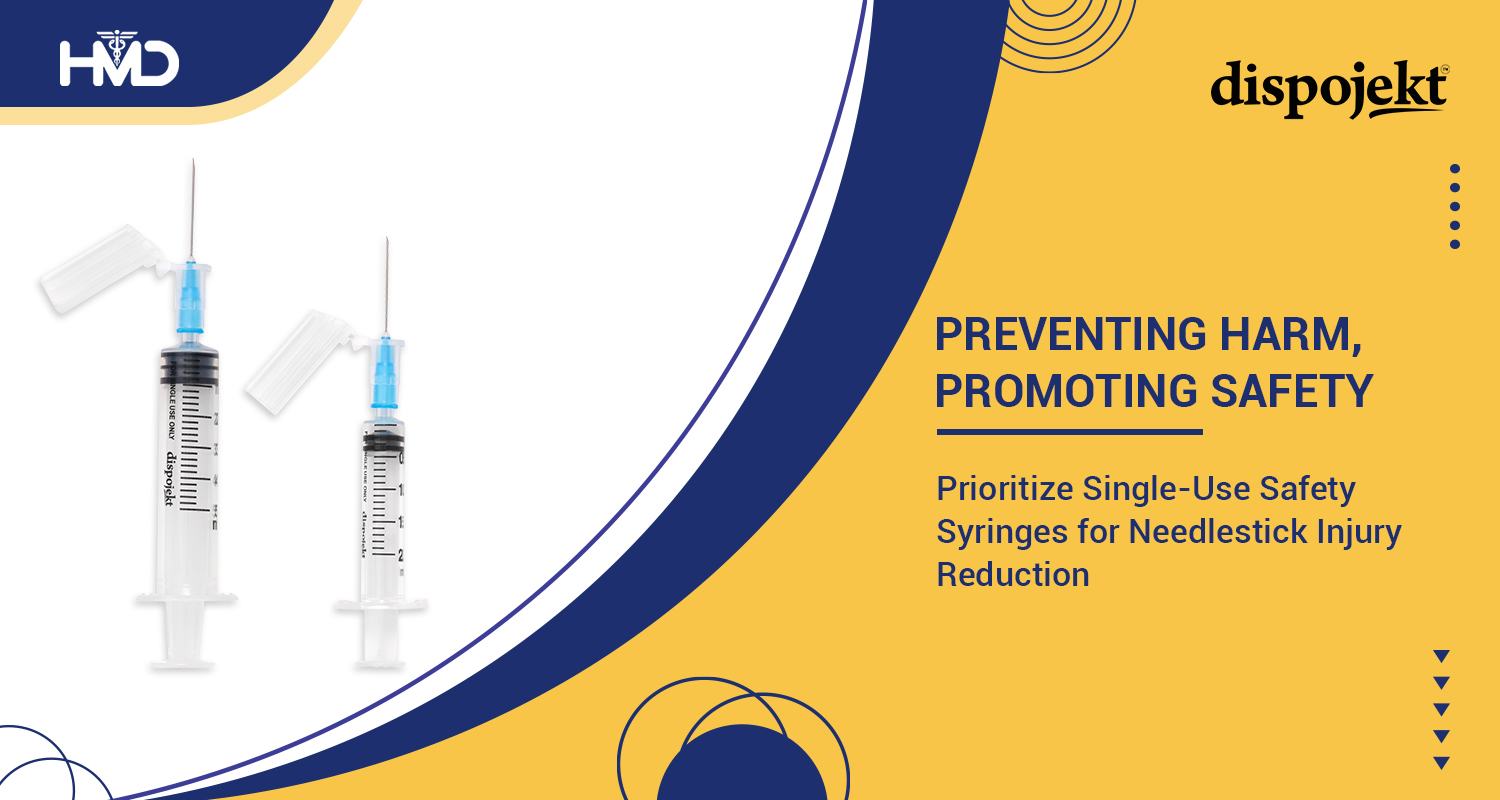

Healthcare workers face a heightened risk of needlestick injuries, which exposes them to potentially life-threatening infections. With over 20 bloodborne pathogens transmissible through contaminated needles, including hepatitis B (HBV), hepatitis C (HCV), and human immunodeficiency virus (HIV), the stakes are alarmingly high. The probability of transmission of HIV following a needlestick injury is approximately 0.3% compared to 3% for HCV and 30% for HBV.
Needlestick injuries often result from practices like recapping used needles, using inadequate sharps disposal containers, or employing needles that lack advanced safety features.
This blog outlines effective strategies to mitigate risks of needlestick injuries, emphasising the importance of adopting advanced safety syringes, enhancing disposal protocols, and fostering a culture of safety among healthcare workers.
How to Prevent Needlestick Injuries?
Here are some guidelines to help prevent needlestick injuries:
1. Avoid Unnecessary Needle Usage
Choose alternatives such as needle-free injectors, needleless systems, single-use syringes, and blunt-tip cannulas for the secure administration of medications.
2. Use Devices with Safety Features
Incorporate needleless I.V. connectors, single-use syringes, self-re-sheathing needles, blunted surgical needles, and safety-engineered sharps in your medical practices. These devices reduce the risks of needlestick injuries by either eliminating or shielding needles after use.
3. Ensure Safe Handling and Disposal
Prioritise sanitisation and appropriate personal protective equipment (PPE). Ensure needles are uncapped only when in use, pointed away at all times, and disposed of in sturdy sharps containers immediately after use. Avoid passing sharps directly to others or leaving them exposed.
4. Provide Training and Education
Deliver training sessions for healthcare workers emphasising the importance of proper sharps disposal, safe injection techniques, and awareness of risky devices and procedures. It is crucial for healthcare workers to stay informed about safety protocols through continuous training.
What to Do in Case of a Needlestick Injury?
Prompt action and proper wound care are critical to minimise health risks in case of a needlestick injury. Follow these steps:
1. Hold the affected area under running water to encourage bleeding.
2. Gently wash the wound with soap without scrubbing.
3. Pat the wound dry and apply a waterproof dressing.
4. Report the incident immediately.
5. Schedule a screening for potential pathogens within the recommended time frame.
In Conclusion
Taking all the necessary precautions and following safety guidelines can reduce the risk of needlestick injuries. Additionally, using safer sharps like single-use syringes or safety syringes can make the medical environment safer for healthcare professionals and patients alike.
At HMD, we recognise the importance of safety and create disposable syringes and syringes equipped with safety features that help prevent injuries and contamination. Visit the HMD website to explore our range of offerings!

Add Comment